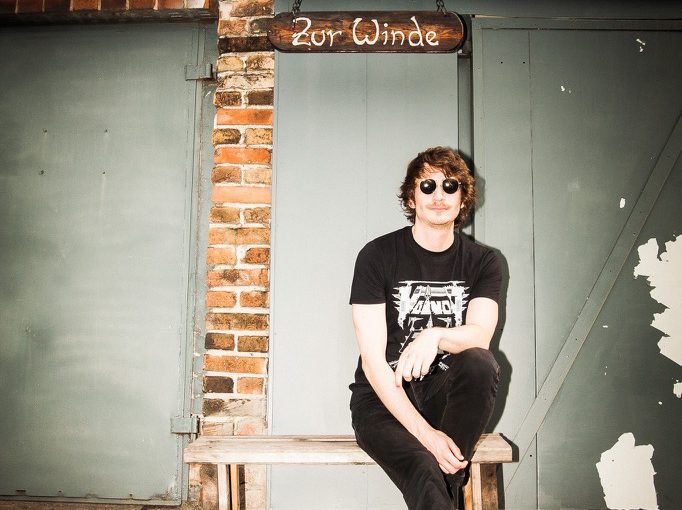You are reading the seventh in a series of interviews with the contributors to Kolapse, a new album of remixes of tracks from my 2013 solo album, Kola. In this installment, Cha Blasco, a musician and composer from Spain but now living in Sweden, talks to Berlin-based producer Chris Herb. If you’ve followed the series you’ll have noticed that Chris was also featured in Kolapse Interview IV as one half of Drescher und Wemmser.
Photography (c) Valquire Veljkovic
I think I’ve known about Chris Herb since 2012-2013 when his debut solo album Death To False Techno came out. He has been working and collaborating with other musicians, artists and producers like Markus Reuter, Lee Fletcher, Adrian Benavides, and Tobias Reber just to name a few, whose works and careers has been pretty inspiring to me as well. That’s how I found him.
Actually Adrian Benavides and Chris, along with Alexander Dowerk, his duo partner in the techno project Drescher und Wemmser, have been pretty involved in my last record Urania: Adrian as producer and performer among many others, and Drescher und Wemmser producing remixes for the songs Broken Toys and New Playlist. I guess that’s why Tobias asked me to interview Chris about his feature on the awesome Kolapse remix album. I gladly accepted the challenge, so here is my conversation with Chris.
In all your productions, as I understand it, polyrhythms are a big part of your touch and identity. Which process do you follow when you apply them to your remixes? Do you have some routine?
When working with Drescher und Wemmser, I often choose a time signature beforehand, usually something which divides into several cycles. 15/4 for example divides into 5 and 3, so we can have two complete rhythmic cycles in one measure. We usually compose with longer measures because it gives us a larger playground and a good overview over multiple cycles, thus providing more space for tension and variations. We are very much influenced by Swiss minimal artists such as Don Li, Nik Bärtsch, Ania Losinger and the Swedish metal group Meshuggah, who are pioneers in next level composition techniques utilizing polyrhythms.
You talk about your influences from minimal, jazz and metal artists when it comes to time signature structures, but what about your sound production choices? Are there some patterns you follow? And in the case of your remix for Tobias, what made you to follow this way?
For sound production I follow a technique I’ve learned from Markus Reuter after visiting him in his studio a couple of times. What we do is we re-amp almost all signals through guitar FX gear and really destroy the signal to accentuate one specific aspect of it. Then I mix it with the original signal up to the point where it is almost inaudible. But when you do that a couple of times, it can really bring your signal to life by creating space and depth, especially when working with the audio output of software synthesizers. I think it might be similar to what exciters do, but in a multi-dimensional way. In the case of our remix, we did that in an even more destructive way, resulting in the very distorted bass synth.
Interesting – I’ll take notes for myself too! It seems a nice way to converge between analogue and digital worlds. Now that you mention Markus’ studio, I see that not only are you a composer, musician and producer and I guess sound engineer – you’re pretty much into mixing and mastering engineering also, and you’re doing so good there. How you feel about yourself in these roles?
I do compose and play the touch guitar but I totally see my strengths in producing, sound design and mixing. When I work on an idea or composition, I try to understand its core intention and express it in the way I shape the sound. To me, a composition is really just a sketch (maybe a very detailed one) and in order to bring it to life, I have to finish the painting. I don’t see myself as much of a mastering engineer though as I mostly do pre-masters. I try to let other people do the finishing touch.
Until now, we’ve been talking about things you did and the process, but what about the future? Is there some new Chris Herb music coming along?
No, I’m not actively working on new solo material. I’m very happy to be able to express myself through my work with Drescher und Wemmser. So right now we’re working on our upcoming EP ‘Hausschrank’ and on the live realization of a 60 minute composition called ‘Ultraschrank’. Furthermore I’m working on a live set with my friend Sanni, a Berlin-based DJ, producer and singer/songwriter. So my plan is to be less of an internet musician and to be more on the stage again.
That sounds exciting! I’m personally looking forward to seeing you live someday, and maybe even share stage together. Thank you for your time Chris, it has been a pleasure to learn more about you.
Thank you! First time being interviewed on my own. Hope I could give some insight
Also the time first I interviewed anyone, haha. Sure you did. Thanks again.
Download Kolapse for free, make sure to listen to Chris’ music on Bandcamp and sign up for the a100ql newsletter where I share news, thoughts, essays and materials related to the blog once or twice per month.

